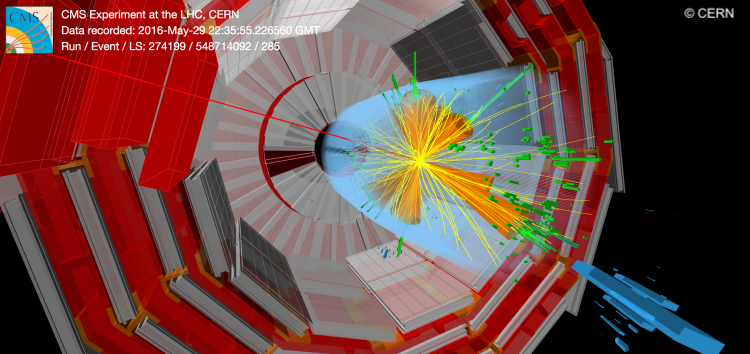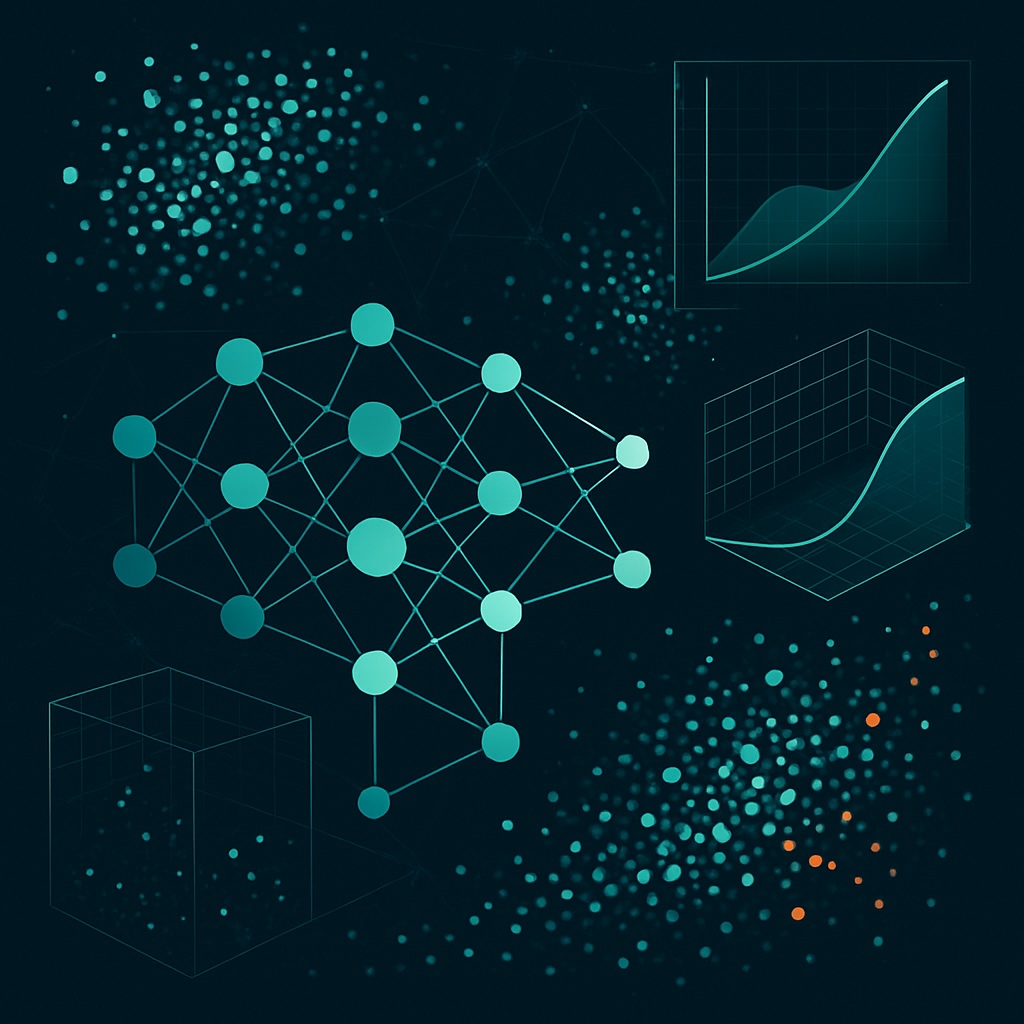Research
 © Komal Taqueer
The Standard Model and Future Opportunities
© Komal Taqueer
The Standard Model and Future Opportunities
The Standard Model of particle physics describes the fundamental particles and interactions that shape our universe. It has been validated through major discoveries, such as the Higgs boson and the top quark. However, it cannot explain phenomena like dark matter. Despite limited future increases in collision energy, we continue to search for new particles and subtle deviations from the Standard Model, especially involving the Higgs boson and top quark.
The High-Luminosity LHC Era
With the HL-LHC, starting at the end of this decade, we expect a massive increase in data — and complexity. Events with up to 200 simultaneous interactions challenge existing algorithms. This provides a unique opportunity to search for subtle effects and rare processes, while driving the development of new data processing strategies.
 The Top Quark and the Higgs Boson
The Top Quark and the Higgs Boson
The top quark, being the heaviest known elementary particle, plays a central role in the Standard Model. Its coupling to the Higgs boson is especially important. Precise measurements — particularly involving rare processes like the production of four top quarks — help us probe this interaction and explore potential signs of new physics.
 Reconstruction with Machine Learning
Reconstruction with Machine Learning
Interpreting detector signals at the HL-LHC requires new techniques. Existing algorithms were not designed for the high densities expected. My work focuses on redesigning particle reconstruction — especially the Particle Flow algorithm — using machine learning. These ML models offer flexibility, scalability, and potential cross-experiment applicability.
Computing and Infrastructure
ML-based reconstruction benefits from dedicated hardware like GPUs. I am working on integrating inference-as-a-service into the CMS computing model, enabling efficient use of heterogeneous systems. This includes adapting workflows to HPC resources, addressing data transfer bottlenecks, and exploring adaptive scheduling based on availability and energy efficiency.
 Detector Design and Optimization
Detector Design and Optimization
ML not only helps in data analysis, but also in designing better detectors. Classical geometries were shaped by traditional reconstruction. Using ML, and differentiable programming, we can systematically optimize detector layouts and prepare for a new generation of big experiments such as those at the Future Circular Collider (FCC). On the way there, we can test and further refine these techniques with smaller experiments, creating direct impact on the design of short term and long term detectors.
.png) Outlook
Outlook
The Future Circular Collider (FCC) offers a chance to explore particle physics at a new level of precision. My research is guided by the possibilities this machine could unlock — from precision studies of the top quark and Higgs boson to machine-learning-driven reconstruction and detector design. These tools are not just tailored to one experiment but form a flexible, future-ready approach that will stay relevant, whether the FCC is built or other paths are chosen.